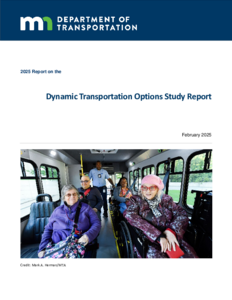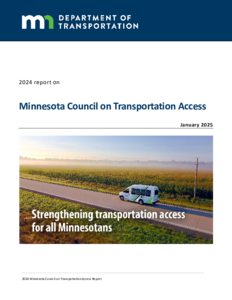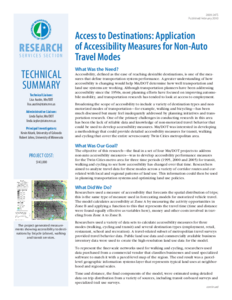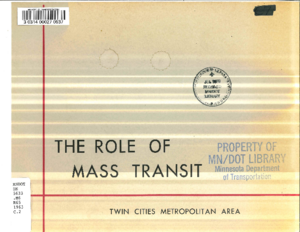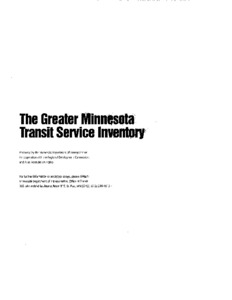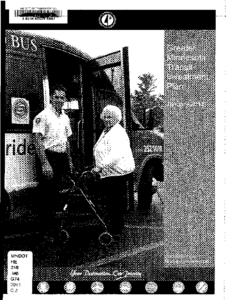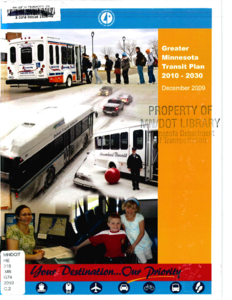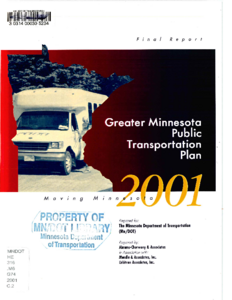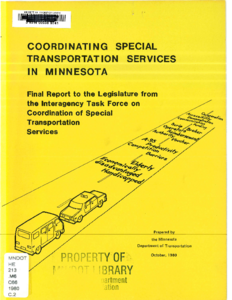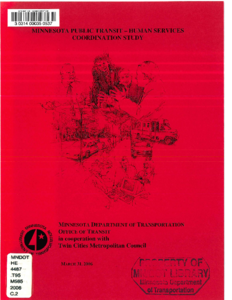The Role of Mass Transit: Twin Cities metropolitan area
Date Created
1963-03
Description
Greater Minnesota Public Transportation Plan: Final Report
Date Created
2001
Description
Coordinating Special Transportation Services in Minnesota: Final Report to the Legislature from the Interagency Task Force on Coordination of Special Transportation Services
Creator
Date Created
1980-10
Description
Minnesota Public Transit-Human Services Coordination Study
Creator
Date Created
2006-03
Description

